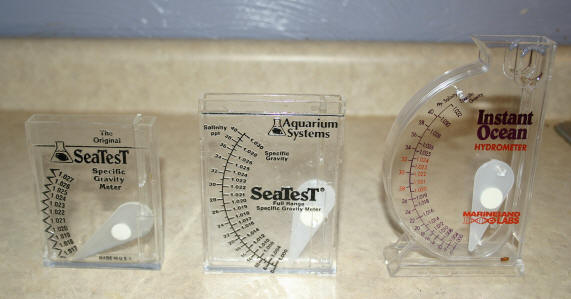Erroneous
Well-Known Member
I have 3 ideas for making an electronic hydrometer, wanted to know if you guys have tried anything along these paths:
1) hydrometer/rangemeter:
Pretty simple idea. Aim a range meter at a hydrometer. Keeping it in a fixed place without touching walls would be the challenge. The concept here is to determine the height of the hydrometer above the height of the liquid.
2) weighted barometric pressure sensor:
Put a barometric pressure sensor in say some kind of small bladder that doesn't leak, weigh it down so that it stays on the bottom, and tell your controller the height of the water column. The higher the pressure, the higher the SG.
3) Float attached to a force meter:
have the force meter at the end of a rigid pole, and attached via fishing line to something like a balloon. The harder the balloon pulls on the force meter, the higher the SG.
For 2 and 3, you'd have to calibrate it with a known value, and they wouldn't work so well if the level of the wort changes heights.
1) hydrometer/rangemeter:
Pretty simple idea. Aim a range meter at a hydrometer. Keeping it in a fixed place without touching walls would be the challenge. The concept here is to determine the height of the hydrometer above the height of the liquid.
2) weighted barometric pressure sensor:
Put a barometric pressure sensor in say some kind of small bladder that doesn't leak, weigh it down so that it stays on the bottom, and tell your controller the height of the water column. The higher the pressure, the higher the SG.
3) Float attached to a force meter:
have the force meter at the end of a rigid pole, and attached via fishing line to something like a balloon. The harder the balloon pulls on the force meter, the higher the SG.
For 2 and 3, you'd have to calibrate it with a known value, and they wouldn't work so well if the level of the wort changes heights.


